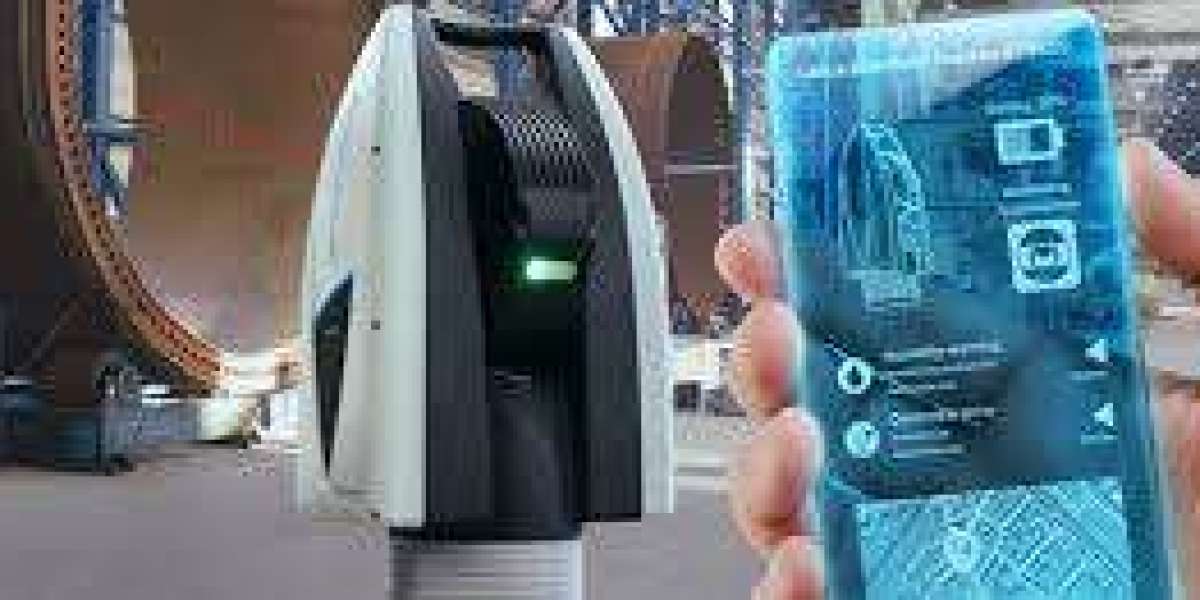In the fast-paced world of research and development (R&D), precision and efficiency are paramount. Whether you’re working on cutting-edge technology, developing new products, or refining complex systems, the accuracy of your measurements can significantly impact the success of your projects. Laser trackers, an advanced measurement technology, are transforming R&D processes by offering unparalleled precision and efficiency.
What Are Laser Trackers?
Laser trackers are high-precision measurement tools designed to capture three-dimensional coordinates of objects with remarkable accuracy. They work by emitting a laser beam that reflects off a target and returns to the tracker. By measuring the time it takes for the laser to return and the angle of reflection, the tracker calculates the exact position of the target. This technology allows for real-time data collection with micron-level accuracy, making laser trackers invaluable for various R&D applications.
Benefits of Using Laser Trackers in R&D
- Unmatched Precision
One of the primary advantages of laser trackers is their ability to provide exceptional precision. In R&D, where even the smallest measurement error can lead to significant deviations in results, laser trackers ensure that your data is accurate and reliable. With the capability to measure with micron-level accuracy, laser trackers enable precise experimentation, prototyping, and analysis.
Example: In aerospace R&D, where components must meet exacting standards, laser trackers can measure the alignment and dimensions of intricate parts with high precision. This accuracy is crucial for ensuring that prototypes meet design specifications and perform as intended. - Enhanced Efficiency
Traditional measurement methods often involve manual processes that can be time-consuming and prone to error. Laser trackers streamline these processes by providing real-time measurements and data, which speeds up experimentation and data collection. This efficiency reduces the time required for tasks such as alignment, calibration, and quality control, allowing R&D teams to focus on innovation and problem-solving.
Example: During the development of a new product, laser trackers can quickly measure and align components, reducing the time needed for assembly and testing. This efficiency accelerates the development cycle and brings new products to market faster. - Real-Time Data and Immediate Feedback
Laser trackers offer real-time data and immediate feedback, allowing R&D teams to make timely adjustments and corrections. This capability is particularly valuable in iterative design processes, where rapid adjustments are often required to refine prototypes and optimize performance. The ability to monitor changes in real-time ensures that any issues are identified and addressed promptly.
Example: When testing a new mechanical system, laser trackers can provide instant feedback on the alignment and performance of components. If adjustments are needed, they can be made on the spot, reducing the risk of errors and improving the overall efficiency of the testing process. - Versatility in Applications
Laser trackers are highly versatile tools that can be used for a wide range of R&D applications. They are suitable for measuring large and complex objects, making them ideal for projects involving intricate designs and assemblies. Their adaptability allows R&D teams to use them for various tasks, including prototyping, alignment, and quality assurance.
Example: In automotive R&D, laser trackers can measure and align complex parts such as engine components and chassis structures. Their versatility ensures that all elements are accurately positioned and aligned, contributing to the success of the development process. - Improved Accuracy in Prototyping
Prototyping is a critical stage in R&D, where accuracy and precision are essential for validating design concepts and testing functionality. Laser trackers enhance the accuracy of prototyping by providing detailed measurements and ensuring that prototypes are built to exact specifications. This improved accuracy helps identify potential issues early in the development process, reducing the need for costly revisions.
Example: When creating a prototype for a new electronic device, laser trackers can measure the alignment and dimensions of components with high precision. This accuracy ensures that the prototype functions correctly and meets design requirements, facilitating a smoother transition from prototype to production.
Applications of Laser Trackers in R&D
- Component Alignment
Accurate alignment of components is crucial for ensuring that they fit together correctly and perform as intended. Laser trackers are widely used for aligning parts in R&D, ensuring that they meet design specifications and function properly. This capability is essential for projects involving complex assemblies and precise tolerances.
Example: In the development of a new medical device, laser trackers can be used to align and position components with micron-level accuracy. This alignment ensures that the device functions correctly and meets safety and performance standards. - Dimensional Verification
Verifying the dimensions of components and assemblies is essential for ensuring that they meet design specifications and fit within the overall system. Laser trackers provide accurate dimensional measurements, allowing R&D teams to verify that components are manufactured to the correct size and shape.
Example: When developing a new consumer product, laser trackers can be used to measure and verify the dimensions of parts and assemblies. This verification helps ensure that the product meets design requirements and functions as intended. - Prototype Testing
Testing prototypes is a critical part of the R&D process, where accurate measurements are essential for evaluating performance and identifying issues. Laser trackers enhance prototype testing by providing detailed measurements and real-time data, allowing R&D teams to make timely adjustments and improvements.
Example: During the testing of a new aerospace component, laser trackers can measure the alignment and performance of the prototype. This data helps identify potential issues and make necessary adjustments, ensuring that the component meets performance standards. - Assembly and Integration
Proper assembly and integration of components are crucial for ensuring that systems function correctly and meet design specifications. Laser trackers facilitate accurate assembly and integration by providing precise measurements and alignment data, helping to ensure that all components are correctly positioned and aligned.
Example: In the assembly of a complex machinery system, laser trackers can be used to align and position components with high accuracy. This alignment ensures that the system functions correctly and meets performance requirements. - Quality Assurance
Quality assurance is a critical aspect of R&D, ensuring that components and systems meet design specifications and regulatory standards. Laser trackers provide accurate measurements and detailed data for quality assurance, helping to identify defects and verify that all elements meet the required standards.
Example: After completing a development project, laser trackers can be used to inspect and verify the dimensions and alignment of the final product. This quality assurance ensures that the product meets design specifications and performs as intended.
Best Practices for Integrating Laser Trackers in R&D
- Choose the Right Laser Tracker
Selecting the right laser tracker for your R&D needs is crucial for maximizing its benefits. Consider factors such as the size and complexity of your projects, the required measurement accuracy, and the types of measurements you need to perform. Consult with laser tracker suppliers or experts to determine the best model for your specific applications.
Tip: Look for laser trackers with features that align with your R&D requirements, such as long measurement ranges, high accuracy, and compatibility with other measurement systems. - Train Your Team
Proper training is essential for effectively using laser trackers in R&D. Provide comprehensive training for your team on how to operate the equipment, interpret measurements, and troubleshoot common issues. Well-trained staff will contribute to more accurate measurements and efficient processes.
Tip: Consider offering ongoing training and support to keep your team updated on the latest advancements in laser tracking technology and best practices. - Integrate with Existing Systems
Laser trackers should be integrated with your existing R&D systems and processes to enhance efficiency and data management. Ensure that the data collected by the laser tracker can be seamlessly transferred and used for further analysis. Proper integration will improve the overall efficiency of your R&D processes and facilitate better decision-making.
Tip: Work with your IT team or software providers to ensure compatibility and smooth data transfer. Integration with data management systems and analysis tools can enhance the value of the data collected by the laser tracker. - Monitor and Optimize Performance
Continuously monitor the performance of your laser trackers and assess their impact on your R&D projects. Collect feedback from your team and use this information to make any necessary adjustments and optimize the performance of the trackers.
Tip: Regularly review your R&D metrics and compare them to your goals. This will help you identify areas for improvement and ensure that your laser trackers are contributing to better results.
Conclusion
Laser trackers are transforming the R&D landscape by offering unparalleled precision, efficiency, and versatility. Their ability to provide accurate measurements, real-time data, and immediate feedback makes them indispensable tools for modern R&D processes. By integrating laser trackers into your R&D workflows, you can enhance accuracy, accelerate development cycles, and achieve better results.
Investing in laser tracking technology can lead to more precise experimentation, faster prototyping, and improved quality assurance. As R&D projects become more complex and demanding, laser trackers will continue to play a vital role in driving innovation and excellence. Embrace the power of laser trackers to boost your R&D efficiency and accuracy, and stay ahead in a competitive market.



